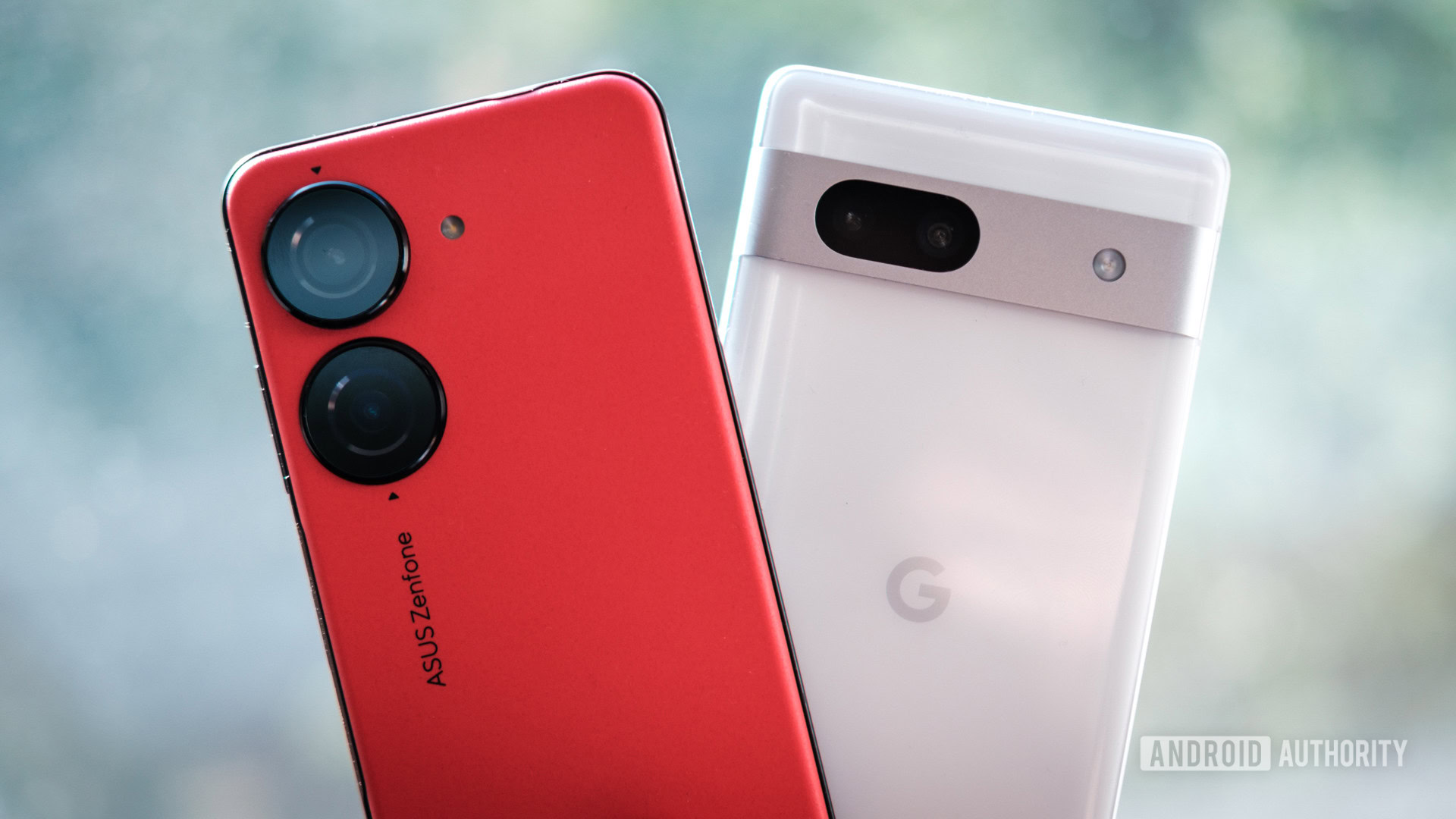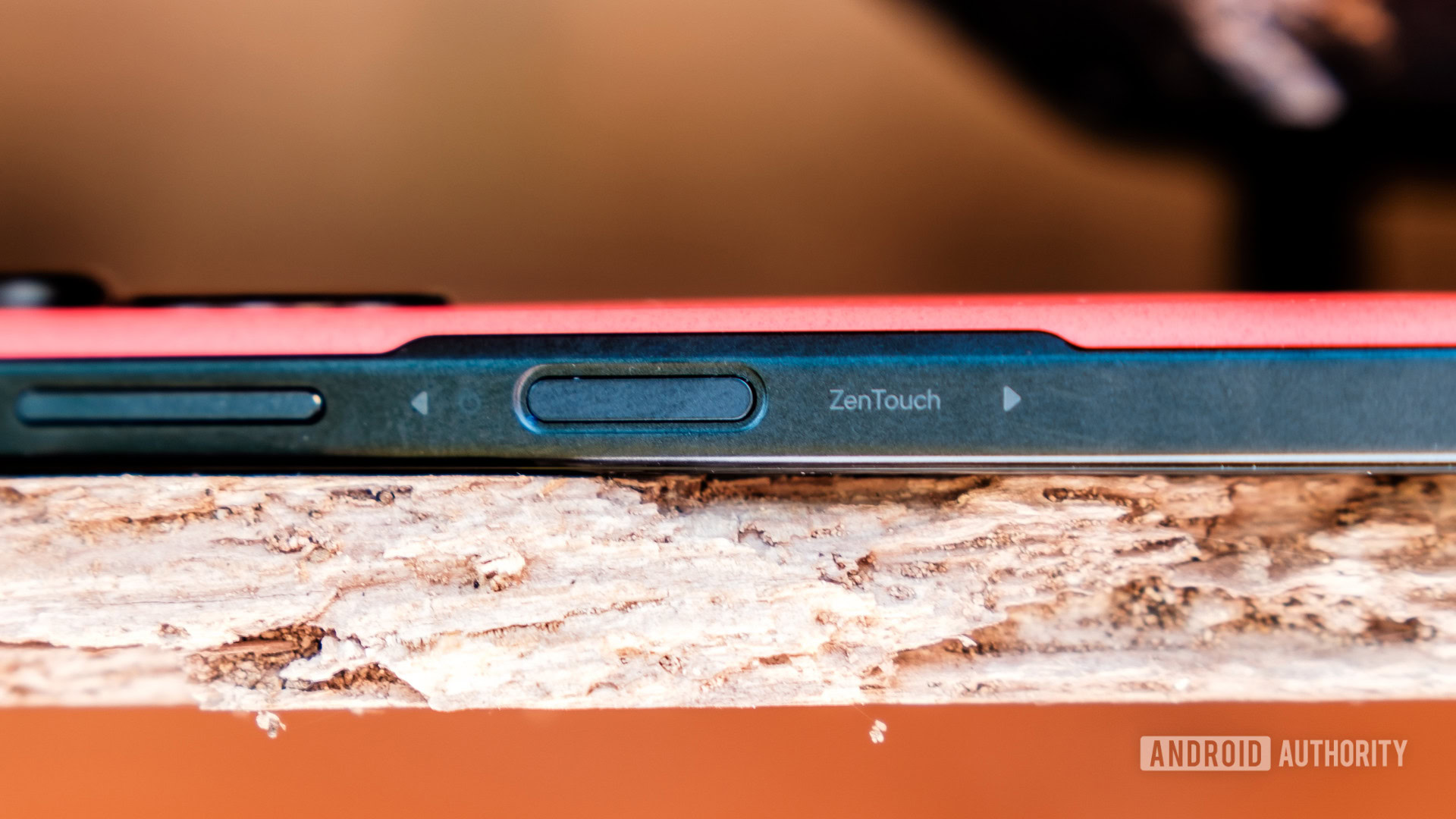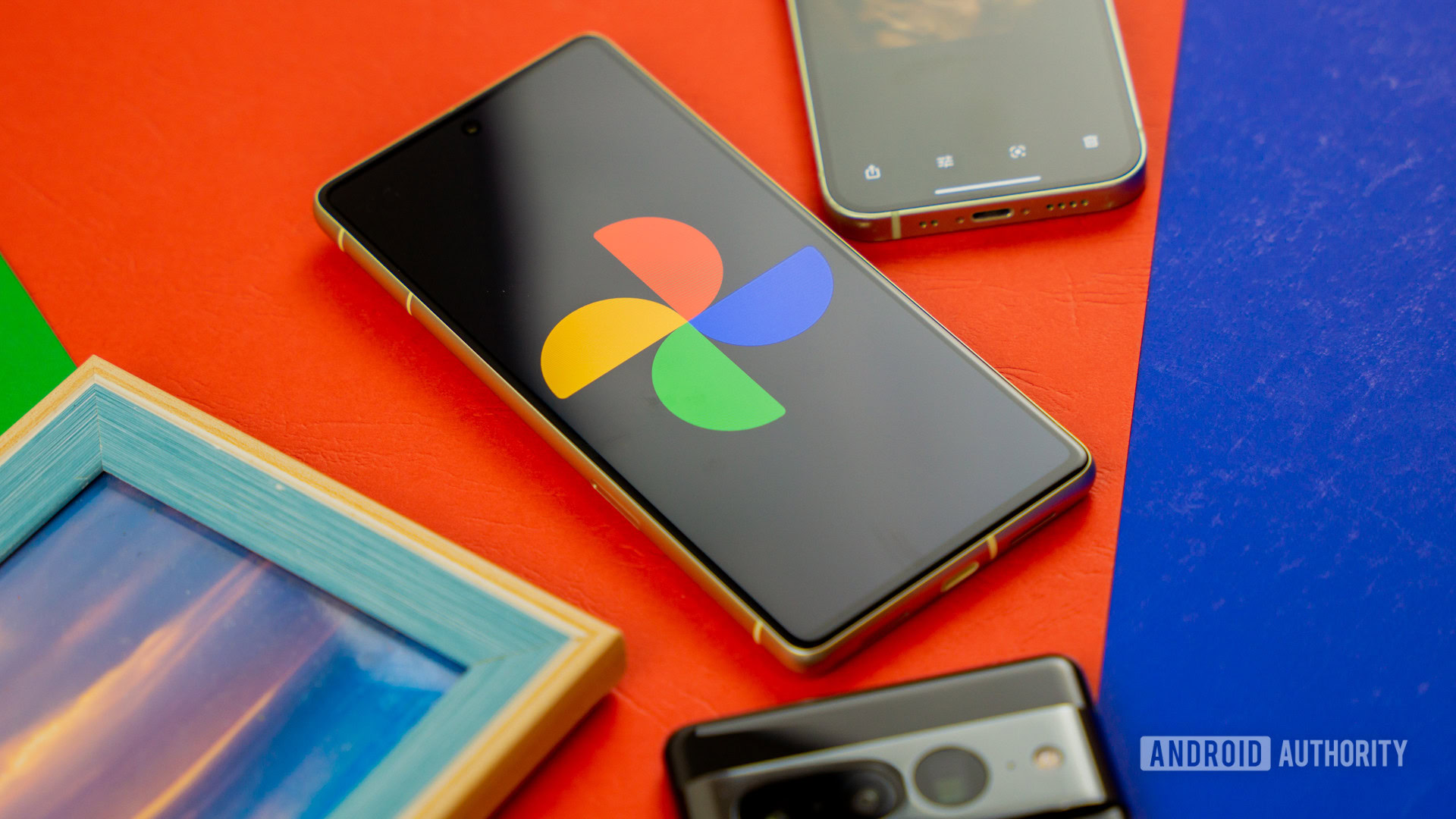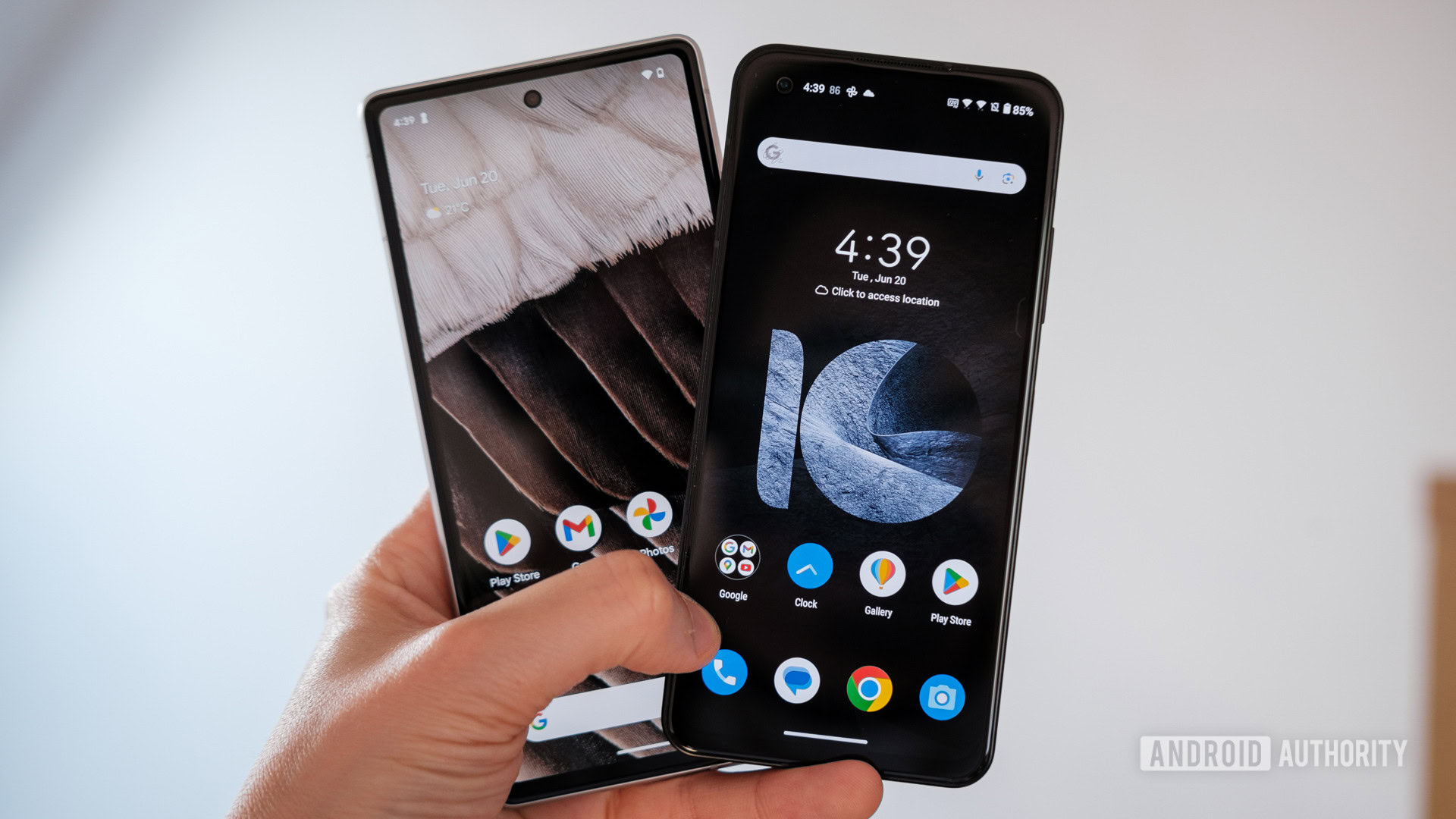Affiliate links on Android Authority may earn us a commission. Learn more.
The Zenfone 10 makes me miss Google's Nexus series

I might be showing my age here; like many Android enthusiasts, I have a particular soft spot for the long-departed Nexus series (and Google Play edition devices, if you remember those?). Yes, it’s been nearly seven years since the Nexus 6P, and the series was plagued with more issues than paying customers should have to shoulder. Still, the series produced a unique blend of hardware and software that, when it worked, was greater than the sum of its parts.
Having spent some very enjoyable time with the ASUS Zenfone 10 and Google’s Pixel 7 series, I can’t help but pine for another supergroup outing that shows off the best of what Android can be. That might sound strange, given that Pixel hardware is by far the best it’s ever been, and ASUS runs virtually stock Android on its handset. But hear me out.
Unique hardware without the gimmicks

After many years of Google trying, the Pixel 7’s hardware is pretty good. It’s not without faults — the Tensor G2 runs hotter than the Snapdragon 8 Gen 2, and the camera bar is too easy to scratch and dent — but the overall package is essentially spot on for the price tag. Still, what would we give for a Pixel that charges in under an hour or has an ultra-snappy fingerprint scanner?
Pixel hardware, in isolation, is unexceptional compared to some competitors, and Google seems to know this. Gimmicky experiments like the Pixel 4’s Soli radar and the rumored temperature sensor in the upcoming Pixel 8 are misplaced bids to stand out. They’re perhaps better ideas than nothing at all, but the litmus test is whether a feature is genuinely helpful for potential customers’ daily lives. Google has swung and missed on that front, at least so far.
Despite vast improvements, Google still doesn't do hardware quite as well as its competitors.
Then there’s the ASUS Zenfone 10, a phone packed to the rafters with easy-to-dismiss extras. Whether it’s the camera’s gimbal stabilization, tap-on-back shortcuts, or swipe key smart gestures. Even the headphone jack might be considered a gimmick in today’s wireless-obsessed audio market. However, spend a little time setting up these features, and it becomes apparent just how useful they all are. Not to mention that the metal and bio-polymer of this phone feel so much nicer than the slippery glass of the Pixel, and it charges fast too.
Now I should note that recent Pixel phones feature a Quick Tap on the back that performs very similar functions to the Zenfone. However, you’re limited to a single gesture. Not only is the Zenfone 10 more flexible and customizable, but ASUS has also made many common gestures more intelligent.
The Zenfone 10 looks and feels great, and plays host to a range of smart features too.
For example, quickly checking notifications with any app open by simply swiping your thumb on the side of the phone, thereby doing away with laboring your thumb up to the top of the screen, is a quality-of-life improvement that’s hard to leave behind. Plus, you can now keep swiping to scroll down a long notification list. Equally, I’ve lost count of how many times I just double-tapped the scanner to launch my favorite messaging app for a quick reply. The ideas are a simple marriage of hardware and software that puts functionality at the forefront.
Similarly, this phone’s video stabilization and long-exposure camera capabilities are highly impressive and prove that sensible hardware choices can still trump software emulation. However, Google’s camera setup is still far out in front in terms of processing for general imaging, portraits, and the like.
To that end, the Zenfone 10 isn’t quite as well fleshed out elsewhere. While the stock Android take is clean and swift, it’s comparatively barebones in terms of apps, theming, or even widgets versus other brands. There’s Game Genie to deliver extra gaming options ripped from the ROG series, of course, various camera light trail modes, and ASUS has an on-device AI photo search function (currently in Beta). But aside from the gestures, that’s about it for the ASUS software stamp. For better or worse.
It isn’t Android that makes Pixel software shine

As synonymous as Android and Google are, it’s not the operating system that stands out on a Pixel phone; it’s pretty much everything else software-wise. While ASUS may have intelligent design covered in the hardware department, it’s Google’s greatest strength when it comes to software.
For starters, you get the best out of Google Photos, Google One, and more when taking your Pixel out of the box. Whether that’s portrait bokeh blur adjustments, free VPN access, or having a ton of cloud storage (the Pixel Fold comes with a six-month 2TB free trial!), Google leverages its extensive software ecosystem to give you a little more than you get elsewhere (unless you pay for Google’s services separately, of course). These software additions make the Pixel series extra-good value for money, at least in the short term.
Google's exclusive software features are what make the Pixel series so compelling.
But then there’s the Pixel-exclusive features too. Call Screen, Hold For Me, voice message transcriptions, and more are ready to go out of the box. Those all build on what we might consider the quintessential smartphone experience, smartening the Pixel series up with intelligent features you won’t find elsewhere (at least not to the same extent).
Let’s not forget the phone’s camera capabilities. Thanks to a virtually unrivaled faith in AI image processing, software smarts continue to propel the Pixel series to the top of the pack on a fraction of the budget of its biggest photography rivals. Motion mode, Top Shot photography, and Google One required Google Photos features all elevate that Pixel photography experience another notch.
In short, Pixel software isn’t really defined by Android; it’s very much Google’s ecosystem that does the heavy lifting. Whether that’s good or bad boils down to how much of a fan you are of Google’s apps and services.

On reflection, I suppose I don’t really want a Nexus phone, as that would miss out on all the advances Google has made outside of the core OS. Nexus is a throwback to the days before Google took the reigns on the software front, and it should probably remain in the past. At the same time, I don’t want to spend money every month on phone features either. But strip out Google One, and the Pixel software experience, encompassing cameras, photos, and other AI extras, lands in the sweet spot — where services make phones more than just a glass slab.
However, that might not be for everyone. Those looking to escape the enclosing walls of Google or any specific software ecosystem may prefer a lighter approach, and ASUS’ take is pretty delicate. Perhaps the Zenfone 10 is already a modern Nexus, or at least as close as we’ll ever get.
Perhaps the ASUS Zenfone 10 is already a modern Nexus. Or as close as you can get.
Still, ASUS intuitive hardware blended with Google’s intelligent software (and camera smarts) would be the best Pixel in my book. I’m sad that phone doesn’t exist, though the Zenfone 10 and Pixel 7 are both brilliant in their own rights.

